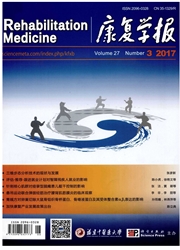

 中文摘要:
中文摘要:
目的:系统评价电针治疗膝骨性关节炎的疗效,为其临床应用提供循证依据。方法:以膝骨关节炎、电针等为关键词,检索Pub Med数据库、清华同方知网数据库(CNKI)、中文科技期刊数据库(维普/VIP)及万方数据知识服务系统(万方),收集2015年12月31日前发表的文献,采用Cochrane协作网提供的偏倚风险评估工具评价纳入文献的质量,运用Rev Man5.3软件对最终纳入文献进行Meta分析。结果:共纳入28篇文献。Meta分析结果显示,与西药比较,电针能明显降低WOMAC骨关节炎指数(MD=-5.41,P〈0.01),降低Lequesne总评分(MD=-1.79,P〈0.01),提高LKSS评分(MD=9.00,P〈0.01),缓解患者疼痛(MD=-0.39,P=0.30)。结论:电针能有效地缓解膝骨性关节炎患者的疼痛症状,改善病情。由于本研究纳入文献质量普遍不高且样本量较小,结果有待高质量、大样本临床随机试验进一步验证。
 英文摘要:
英文摘要:
Objective:To provide a reliable evidence-based evidence for clinical application of electroacupuncture (EA) on knee osteoarthritis, a systematic review was conducted. Methods:A literature search was performed in databases including Pubmed, CNKI, VIP and Wan Fang with "knee osteoarthritis" "electroacupuncture" which were selected as keywords to obtain the original research ar- ticles. The articles published before December 31,2015. The evaluation tool of bias risk was applied for quality assessment of eligible studies. The software of Review Manager 5.3 was used for qualitative analysis of literatures and meta-analysis. Results:A total of 28 studies were included. Compared with the Western medicine group ,the Western Ontario and McMaster University (WOMAC) score in the EA group was decreased (MD=-5.41 ,P〈0.01 ),the Lequesne score was decreased (MD=-l.79 ,P〈0.01 ),the LKSS score was increased (MD=9.00,P〈0.01) and the VAS score was reduce (MD=-0.39,P=0.30). Conclusion:Existing evi- dence suggested that EA could effectively relieve pain and improve symptoms of knee osteoarthritis in patients. However, larger-scale well-designed trials are needed to confirm the curative effect of EA.
 同期刊论文项目
同期刊论文项目
 同项目期刊论文
同项目期刊论文
 期刊信息
期刊信息
